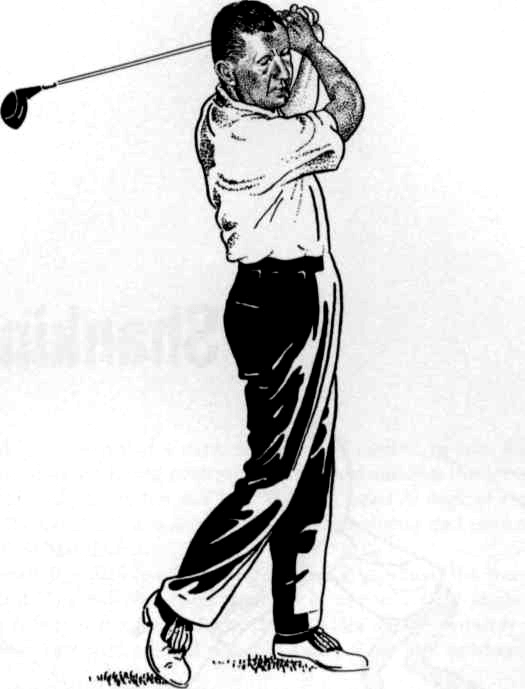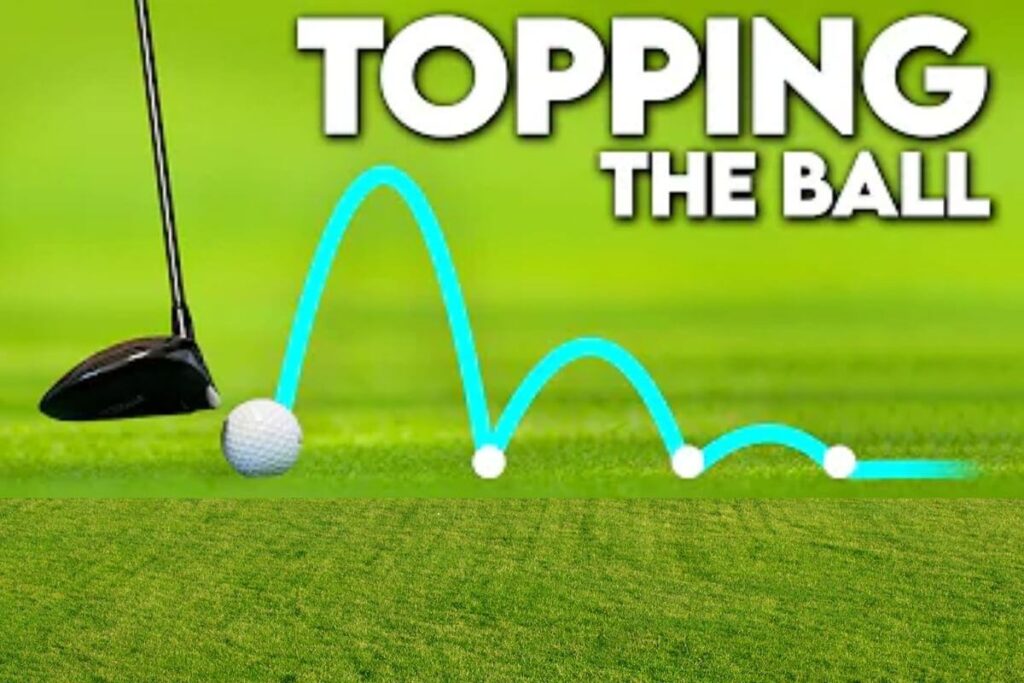There are three basic elements that determine the success or failure of any golf swing:
- The arc formed by the clubhead.
- The angle or plane of the swing, formed by the arms and club; and determined largely by the ball’s position in relation to the stance, the amount of shoulder tilt, and movement of the hands.
- The motion or flow of the swing.
In the case of topped shots where the ball is usually contacted above center, the basic fault should be charged as an “arc” error. However, the above fundamentals of “angle” and “motion” can spoil the arc, and thus be indirectly guilty.
The ideal swing, one which would seldom produce a topped shot would find:
- The feet and legs producing a firm foundation for balance and swing power, as well as movement, rhythm, and measurement in returning the club squarely to the ball.
- The left shoulder-arm unit serving as a fixed radius for the club head arc from takeaway through impact.
- The right arm hinging at the elbow on the backswing, then straightening (or nearly so) at impact.
In other words, a player would avoid topped shots if he could duplicate at impact a correct address position of his legs, left shoulder-arm unit, and right arm.
Frequently there is no single fault that produces a bad shot; just as no single point, if properly executed, can assure a perfect shot. Often there is a basic fault and several related faults. The big problem or challenge in teaching golf is to detect the basic error.
Nevertheless, we will take a look at some of the causes of topped shots and how to fix it.
Here are 7 reasons why you keep topping the golf ball:
- You’re Scooping The Ball
- Improper Grip
- Improper Positioning Of The Ball And Club Head At Address
- Too Much Crouch At Address Position
- Lack Of Arm And Wrist Control
- Too much weight on the toes or heels
- Over-emphasizing advice to “keep your head down”
Table of Contents
Why Do I Keep Topping The Golf Ball
1. You’re Scooping The Ball
Probably the most common cause of the topped shot originates in the golfer’s mind when he consciously or unconsciously feels that he must scoop beneath the ball to put it into flight. Such thinking is especially common on the pitch shots where the player wants maximum height.
The player then leans or tilts his body to the right on the downswing, apparently trying to put himself “under the ball.” This usually restricts the forward motion of the coordinated swing and results in an upward lift or scoop with the arms and hands. This causes the club head to rise abruptly at the ball and frequently catch it above center.
An exaggeration of this may lower the right side so much that the club head jams into the ground behind the ball. Thus, scooping can also be a cause of “fat” shots
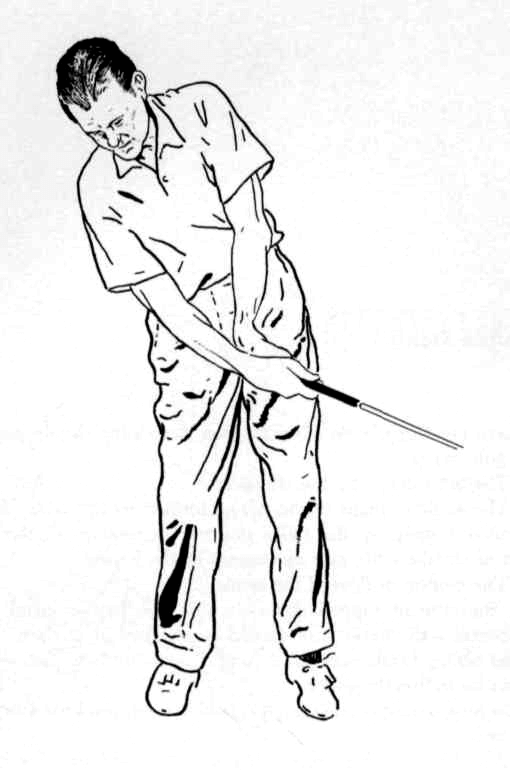
Fix: Trust The Loft Of Your Club
All clubs, even the driver, have sufficient built-in loft to put a golf ball into flight without any conscious scooping effort on the part of the player.
In fact, a ball is more likely to rise if backspin has been applied to it with a down and through motion of the club head at impact. Though it can be overdone, advice to “hit down on the ball” probably will help anyone who has a tendency to scoop shots.
A gimmick, originated by J. Victor East, has helped convince pupils who don’t trust their club loft. The pupil is asked to hit over some tree branches. He usually tries to scoop the ball and invariably tops the shot. Then he’s asked to hit under the branches.
Now he hits the ball correctly with a downward blow, and, to his amazement, the ball flies over the limbs.
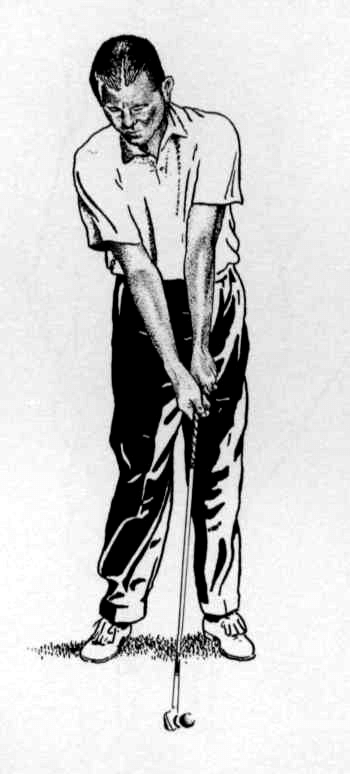
2. Improper Grip
Any abnormal grip can destroy the proper club head arc and thus produce topped shots. However, the most common grip fault that results in hitting the ball above center is to have the right, or bottom, hand turned too far to the right, or under, the shaft.
This right hand grip has the shaft largely in the palm and directly across it. Such a grip is fine in the baseball swing when a player is trying to contact a ball at, say, chest height.
However in golf, with the ball resting on the ground, this grip merely encourages closing the clubface and lifting the club head “over” the ball.
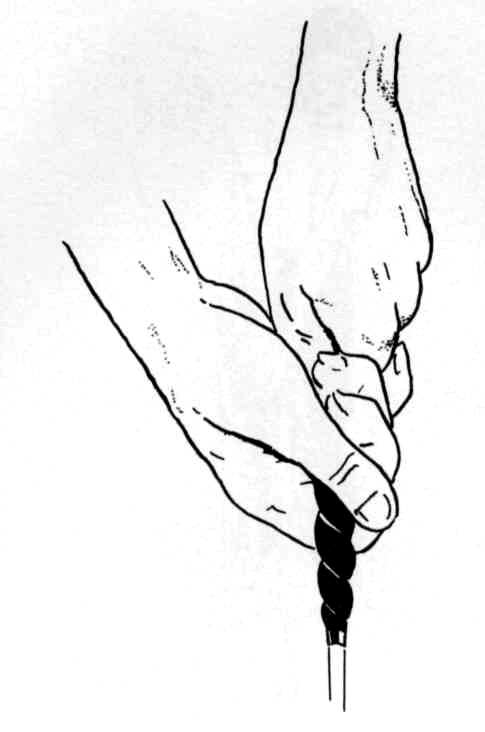
Fix: Proper Grip
In a correct golf grip, the player should grasp the club largely in the fingers of his bottom hand. Thus, when this hand is closed around the shaft, the “V” formed by the thumb and forefinger will point between the player’s chin and his right shoulder.
I also advocate that the player see two knuckles of his left, or top, hand when he addresses the ball. This is the best grip to produce a club head path that will connect squarely with a ball that is at ground level.
Even “non-toppers” should develop a proper grip. A bad grip is a direct cause of most swing errors.
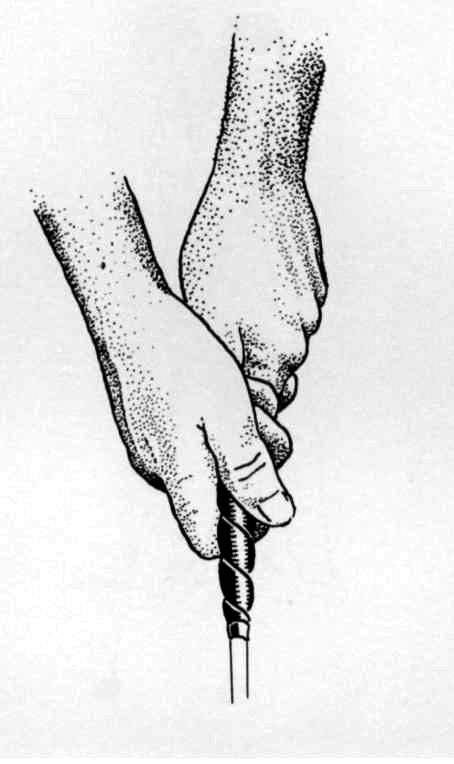
3. Improper Positioning Of The Ball And Club Head At Address
Topped shots can result from any positioning that affects the swing arc. The club head, if positioned too far behind the ball (left) will cause the club to meet the ball on the upswing unless swing compensations are made.
The same is true when the ball is played too far forward in the stance (center). The club head may contact the top of the ball on the downswing if the ball is played too far back in the stance (right)
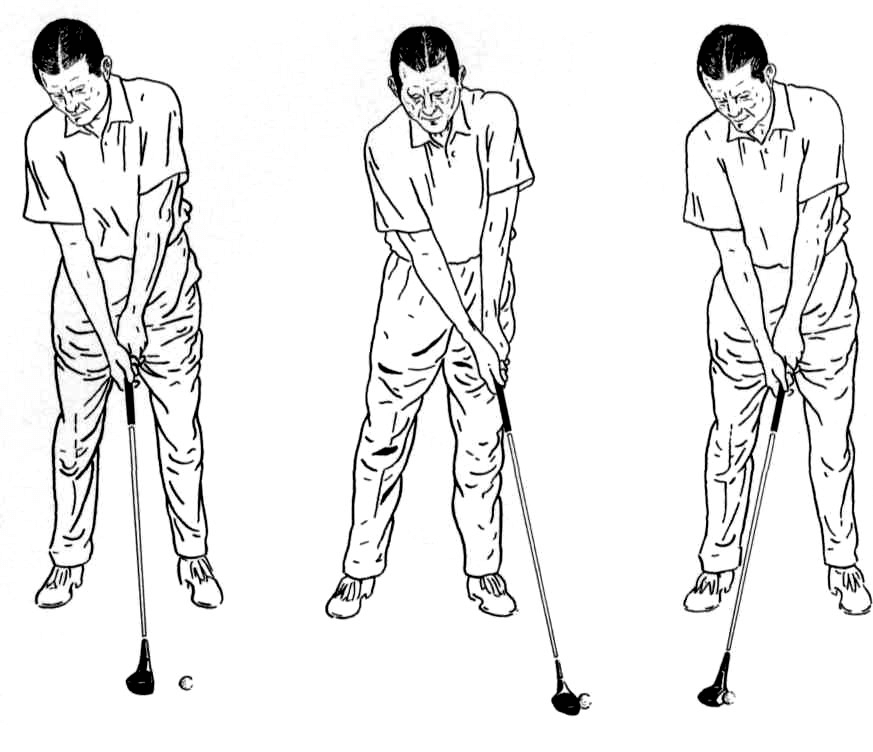
Fix: Proper positioning of the ball and club head at address
While professionals vary slightly in ball positioning, there is a “safety zone” in which the ball should be played. This safety zone is between the center of the stance and the left heel.
When the ball is positioned within this area, and when the club head is placed close behind the ball, the swing arc need not be altered; and a square hit should result.
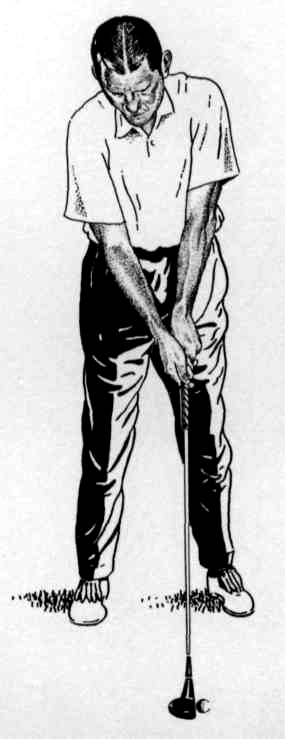
4. Too Much Crouch At Address Position
This problem is more apt to occur with relatively short shots. Thinking ho is getting more control by getting closer to the ball, the golfer is actually losing control by forcing the arms away from the body. In this position, there is little hope of controlling the club head.
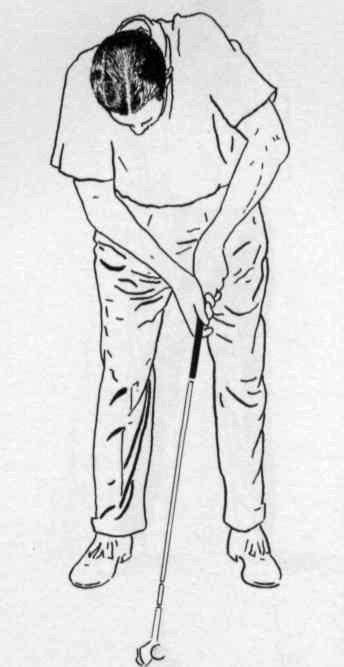
Fix: More upright stance – arms in tight to body
Allow arms to “measure” the proper distance to the ball. Try to “feel” the arms in close to your body. Then, when starting the backswing, the pivot will help turn the arms naturally to the correct position.
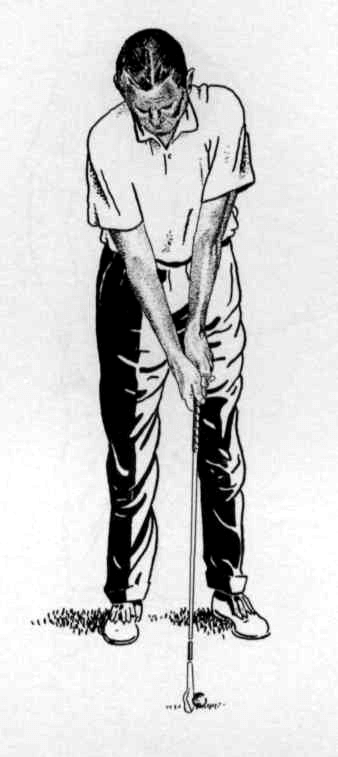
5. Lack Of Arm And Wrist Control
With the arms away from the body and the wrists acting independently, there is little chance that the ball will be hit squarely. There are too many opportunities for the club head to stray.

Fix: Square club head contact through control of arms and wrists
The address position should be more or less duplicated at impact. It is comparatively easy to accomplish this if you can think of the wrists as a continuation of the arms, working together in a rhythmic grooved approach to the hitting area.

6. Too much weight on the toes or heels
A frequent cause of topping is placing too much weight on the toes, either at the address position or during the swing.
This forward weight causes the player to lose some balance during the swing. With his weight forward, he unconsciously tries to regain balance by folding his arms.
This, in turn, causes the club head to swing “over the ball” and catch it above center. Too much weight on the heels can also cause the arms to lift the club head, though this is not so common a cause of topping as is too much weight on the toes.
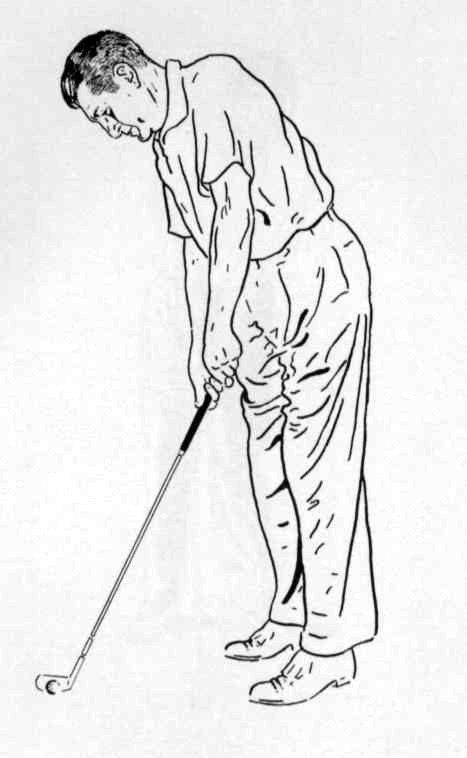
Fix: Correct weight distribution at the address position, with the knees slightly bent
The weight should be equally distributed between the ball and the heel of each foot. If anything, the weight should be slightly “inside” – on the instep side of each foot.
The feet and the legs should be at “relaxed attention” in the address position. As with the runner just before the gun, they should be prepared for action, but not to the point that they are tense.
A slight bending of the knees will help you achieve this feeling. It will enable you to execute a balanced swing wherein your weight does not move too much onto the toes or the heels.
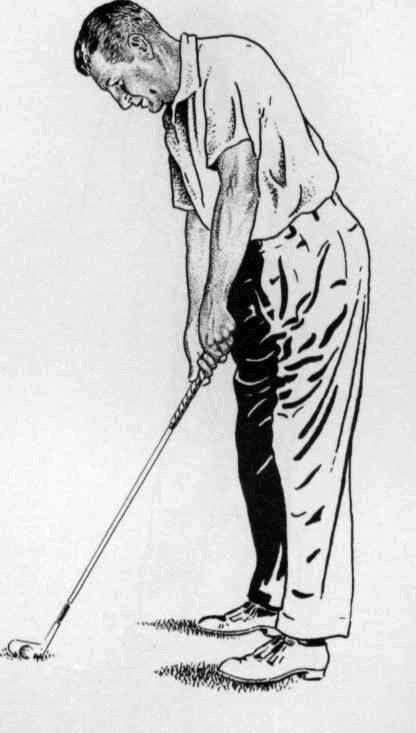
7. Over-emphasizing advice to “keep your head down”
I feel that if taken literally, advice to keep your head down is of questionable value. It can be a major cause of topped shots.
Over-emphasis of “head down” frequently causes such a restriction in the shoulder turn on the down and through swing that the arc is spoiled, and the arms fold upward, pulling the club head over the ball.
“Head down” might even cause a player to unconsciously lower his or her head as the club moves into the hitting area. This often promotes a folding of the arms and results in a topped shot.
Naturally the other extreme – looking up – can cause a raising that also lifts the club head. However, this is usually caused by indecision and resulting restriction. The mental attitude should be positive and the swing free and trustful.

Fix: Keep the head steady until impact. Then let it turn with the follow-through
The left shoulder should be rising at impact and the head should be allowed to turn with the club on the through stroke. The only things that should be truly “down” are the gradually downward descent of the club head and the straightening down and through of the right arm.
There should be a sensation of “staying up” with the head, while the arms extend or reach down to the ball. If a player strives to feel “tall” when he addresses the ball, and then duplicates his address position at impact, he will reach for the ball at impact and avoid the folded arms which produce the topped shot.
